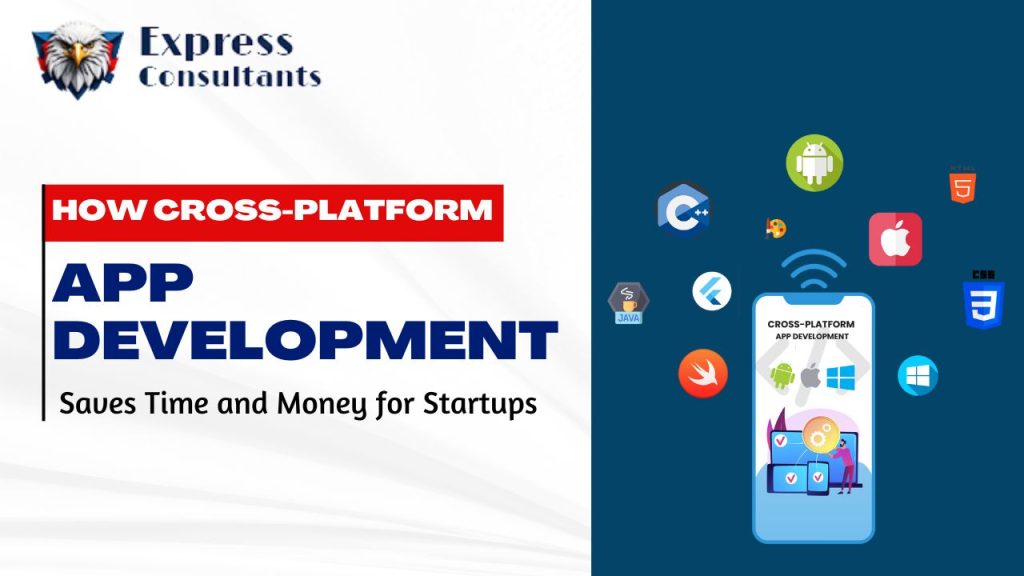
How Cross-Platform App Development Saves Time and Money for Startups
September 11, 2024How Cross-Platform App Development Saves Time and Money for Startups
Developing for all platforms doubles your costs. Cross-platform solutions? They cut that by half.
Startups, with their relentless pursuit of innovation, often face a common dilemma: how do you launch an app that works seamlessly across devices without burning through your entire budget? The answer, increasingly, lies in cross-platform app development. Not only is it a smarter way to save time, but it’s also an absolute game-changer when it comes to saving money. Let’s break down what cross-platform app development really is and why it’s the go-to solution for startups.
What is Cross-Platform App Development?
In a nutshell, cross-platform app development is like making one app that fits all. Instead of building separate versions for iOS, Android, and other operating systems, you code once and deploy it across multiple platforms. How sweet does that sound? Imagine the amount of time you save when you don’t need to build and maintain multiple versions of the same app.
So yeah, with a single codebase, your app gets a wider reach without the overhead of developing and maintaining different versions. Developers use tools like Flutter, React Native, or Xamarin to create these apps, allowing startups to get the most for their buck without worrying about users on different devices being left out.
Benefits of Cross-Platform App Development for Startups
Now, let’s talk benefits—’cause we all love those, right? Cross-platform app development has a bunch, especially for startups looking to stretch every dollar and make every second count.
- Cost Efficiency: Instead of paying developers to write code for multiple platforms, you’re paying for one team to develop a single app that works everywhere. That’s a no-brainer, According to research, businesses save around 30-40% on costs when they opt for cross-platform development over native development.
- Faster Time to Market: Time is money, particularly for startups trying to get ahead of the competition. With a single codebase, the time taken to launch on multiple platforms is drastically reduced. You can get your app out there, start gaining traction, and pivot if necessary—faster.
- Easier Maintenance & Updates: When you need to push updates or fixes, you do it once. Just once, this keeps things simple and ensures consistency across all platforms. Imagine managing two separate development tracks—sounds like a nightmare, right?
- Wider Reach with Consistency: Whether your user has an iPhone or a Samsung, your app’s experience stays consistent. This uniformity can build brand loyalty faster because people love when things work seamlessly, no matter what device they’re using.
Specific examples? Take Instagram and Uber Eats. Both started using cross-platform solutions to scale their services more quickly across multiple devices, and look where they are now.
Choosing the Right Cross-Platform Development Framework
So, you’ve decided to go cross-platform. But which framework should you choose? That’s where it gets a bit tricky. Picking the right framework isn’t just about what’s popular, it’s about what suits your specific needs.
- Flutter: Created by Google, this one’s quickly gaining steam, especially if you want a slick, native look and feel without the hassle of native code.
- React Native: Facebook’s baby and one of the most popular frameworks out there. Tons of startups love React Native for its efficiency and ease of use.
- Xamarin: Part of the Microsoft family, Xamarin is ideal if you’re already knee-deep in .NET.
But hey, don’t let this list overwhelm you, the key is to align the framework with your project’s goals, the skillset of your developers, and the experience you want to deliver. Trust me, you don’t wanna spend weeks coding in a framework only to realize halfway that it doesn’t suit your app’s needs. That’s just bad juju.
Potential Drawbacks and How to Overcome Them
Alright, no sugar-coating here—cross-platform development isn’t all sunshine and rainbows. It’s got its drawbacks, but, as with anything, knowing how to handle them makes all the difference.
- Performance Issues: Since cross-platform apps are designed to run on multiple devices, they may not be as fast or optimized as native apps. The key is to work with an experienced developer who knows how to optimize performance using best practices.
- Limited Access to Native Features: Sometimes, cross-platform frameworks don’t give you full access to device-specific features (like the latest iOS updates). But hey, there’s a workaround. You can implement native code alongside cross-platform solutions, a little hybrid magic, if you will.
- UI/UX Consistency: It’s trickier to achieve the exact native look for each platform, but again, a good designer knows how to handle these nuances.
How Express Consultants Can Help You in Cross-Platform App Development
Here’s where Express Consultants comes in, and trust me, we know our stuff. We’re all about helping startups get the most out of cross-platform app development by taking a highly tailored approach.
Unlike a lot of agencies that slap together an app and call it a day, Express Consultants dives deep into understanding what your startup truly needs. We’ll help you choose the right framework, ensure your app performs like a beast across all devices, and most importantly, we make sure you stay on budget.
But that’s not all. Our team doesn’t just hand you an app and walk away. Nope. We’re with you for the long haul, making sure the app stays updated, optimized, and competitive in the ever-evolving mobile market.
Wrapping It All Up
To sum it up, cross-platform app development offers startups a fast, cost-effective way to reach a broad audience without the headache of managing multiple codebases. Whether it’s saving time, reducing costs, or ensuring consistent performance across devices, it’s a solution that startups just can’t ignore.
And when it comes to making this happen, companies like Express Consultants have your back. So, if you’re ready to save some serious cash, get your app to market faster, and still deliver a quality product, why not give cross-platform app development a shot?
In the end, choosing this path isn’t just about saving money—it’s about making smart, scalable decisions that keep your startup ahead of the competition. Ready to build the next big thing? Let’s make it happen with cross-platform development.
FAQ
1. What exactly is cross-platform app development?
In simple terms, cross-platform app development lets you build one app that works across multiple platforms (like iOS and Android) using a single codebase. Instead of creating separate apps for each platform, developers use frameworks like Flutter or React Native to make sure the app runs smoothly on all devices.
2. Why should startups consider cross-platform development?
Startups are always looking to save time and money, right? Cross-platform development lets them do exactly that. Instead of hiring separate teams to build different versions of the app for each platform, you can get the job done with one team.
3. How does cross-platform app development save money?
Since you only need to build one codebase that works across all platforms, you’re cutting down on development costs big time. Maintenance is easier too—updates only need to be done once. No need to worry about juggling multiple versions of the same app. That’s a huge money-saver.
4. Will a cross-platform app perform as well as a native app?
For most cases, yes, While there might be slight performance differences, they’re usually small enough that users won’t even notice. With the right developers and optimization, cross-platform apps can perform really well—just like their native counterparts.
5. What are some potential drawbacks of cross-platform development?
A couple of things: cross-platform apps may not access every native feature of a device, and performance might not be as fast as native apps in very specific cases. But honestly, these issues can often be worked around by skilled developers or using hybrid methods (adding a bit of native code where necessary).
6. Which cross-platform framework is best for startups?
It really depends on your specific needs. For instance:
- Flutter (from Google) is great for creating apps that look native and feel smooth.
- React Native (Facebook’s tool) is a popular choice for startups because it’s user-friendly and gets the job done fast.
- Xamarin (from Microsoft) is best if you’re already using .NET.
Each one has its perks—choosing the right one comes down to what kind of app you’re building and your team’s expertise.
7. Can cross-platform development help me launch my app faster?
Absolutely, with just one codebase to manage, development time is significantly reduced. You’ll get your app on both Android and iOS simultaneously, allowing you to enter the market quicker than if you were developing separate apps for each platform.
8. What if my app needs to use specific features from iOS or Android?
No worries, even though cross-platform apps don’t always have full access to platform-specific features, you can still add native code where needed. This “hybrid” approach gives you the best of both worlds—wide compatibility and specific functionality when required.
9. How does cross-platform development impact updates and maintenance?
One of the best things about cross-platform development is that updates only need to be done once. This makes maintaining and upgrading your app so much easier. You won’t have to worry about separate teams working on different versions—it’s all streamlined into one process.
Ready to unlock your business's potential with custom software
Contact Us


